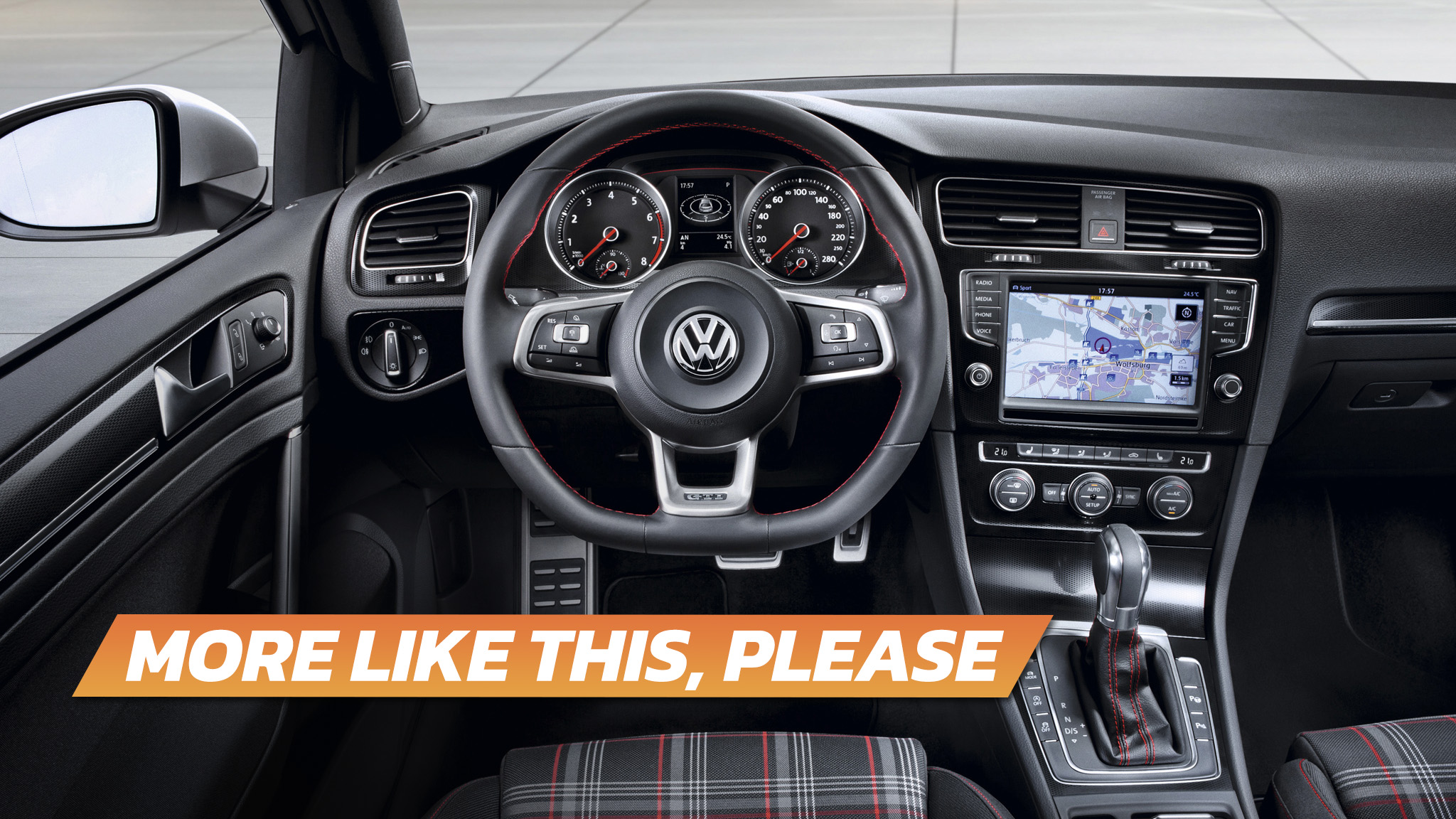

Sit in a Mk7 Volkswagen GTI and you’ll be hard-pressed to find a disagreeable surface, material, switch, or button. It’s one of the most perfectly laid-out cabins I’ve ever sat in. Simple, no-nonsense, and high quality. However, get into a Mk8 GTI or any other new Volkswagen product, and you’ll be disappointed to learn that VW trashed what worked so well in the previous generation, in favor of a confounding touchscreen and cheaper materials. Thankfully, the German automaker seems to have recognized the error of its ways and wants to address these shortcomings moving forward.
“When you open the door on a Bentley, it’s big and bold architecture, very strong luxury. When you open the door of a Volkswagen it needs to be simple and usable, and not overly decorated,” VW’s design chief Christian Schreiber recently told Top Gear. “This should be the same once you use the car; it’s meant to work with you and not make things more complicated. It needs to also play with all the touchpoints you have in life.”
That’s music to the ears of anyone who’s been forced to use the frustrating window switches in a Volkswagen ID.4. There are only two—one for the left window and another for the right—plus a button that shifts their control from the front doors to the back.

More importantly, though, Volkswagen intends to improve the material quality of its cabins. VW used to be a brand that punched above its market position where interior quality and design were concerned. In recent years, though, the company’s interiors have been filled with cheap piano black trim, horrid touch capacitive buttons, and scratchy hard plastics. No more, says VW’s head of design Andy Mindt.
“We’re going to try and kick out cheap plastic materials and put the money instead into fabrics and improving quality, which helps save money and means we can use it elsewhere. An example could be a door card that’s made of three pieces. We’ll try instead to design it using one island in the middle. There’ll still be a door handle and armrest as before, but it’ll all be built from one piece. It also makes the whole process more sustainable.”
Fabrics have been used to great effect in a few modern cars, mainly those hailing from Sweden. Ideally, switching to high-quality fabrics and simpler one-piece door cards could make VW’s products feel nicer while also keeping costs down—both for the automaker to build the cars and, hopefully, for customers to buy them. It’ll all contribute to a friendlier vibe in the cabin, Mindt believes.
“What is the need to be aggressive? Our core is like this: be the nice guys.”
Got tips? Send ’em to tips@thedrive.com